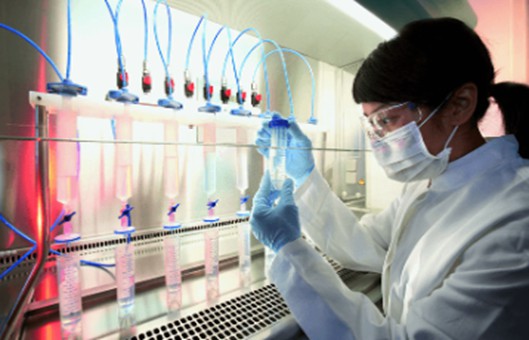Culture and Expansion Protocols of Organoids
GUIDELINE
Organoids are a complex collection of cells grown in a three-dimensional (3D) medium, which are derived from embryonic stem cells (ESC), induced pluripotent stem cells (iPSC), or adult stem cells (ASC). Organoids are passaged with a combination of mechanical and enzymatic dissociation. Organoids are typically passaged on a consistent regular schedule driven by size or indicators of differentiation such as the accumulation of debris within the lumen of the organoid.
METHODS
- Warm complete medium to room temperature. Keep basal medium at 4°C (on ice). Thaw ECM at 4°C and dilute if required.
- Place desired culture vessels in a 37°C incubator to warm for at least 60 min.
- Aspirate and discard spent medium from the culture vessel without disturbing the domes. Avoid any floating domes while aspirating the medium.
- Using a cell lifter, scrape attached domes from the surface of the plate to the bottom or corner of the vessel. Add a small volume basal medium to each well containing detached domes to facilitate a subsequent transfer.
- Using a pipettor or 5-ml serological pipet pre-wetted with cold basal medium, transfer the "mass" of detached domes plus any medium to an empty conical tube. Using a P1000 pipet tip pre-wetted with cold basal medium, pipet organoid/ECM/medium mixture up and down 20 to 30 times to fully disrupt the domes.
- After mechanical dissociation, fill tube(s) to their maximum volume with the cold basal medium. Centrifuge suspension to pellet. Carefully aspirate supernatant and discard without disturbing the organoid pellet.
- Re-suspend cell pellet in ECM at the desired volume. If necessary, dissociated organoids from multiple tubes can be pooled. With a pipettor, pipet up and down 20 to 30 times to mix or until completely re-suspended. Do not introduce bubbles.
- Remove the culture vessel from the incubator and place it in the BSC.
- Using a pipettor, aspirate and then dispense the proper volume of ECM/organoid suspension in the form of 10 to 15 μl droplets evenly distributed across the culture vessel surface. When seeding 6-well plates, aspirate 100 μl and seed a single well at a time. When seeding larger vessels (eg, 10-cm2 dishes), aspirate 200 μl at a time.
- Immediately cover the vessel with a lid and carefully invert without disturbing the domes.
- Transfer the vessel (while inverted) to a 37°C cell culture incubator. Leave the vessel undisturbed for 15 to 30 min to allow the ECM to polymerize.
- Return the vessel to the BSC and return to the normal orientation.
- Carefully add room temperature complete medium without disturbing the domes.
- Return the plate to the incubator.
- Maintain cells by performing medium changes every 2 to 3 days and passaging as required (every 7 to 14 days, depending on the model).
Creative Bioarray Relevant Recommendations
- Creative Bioarray developed a protocol that can differentiate brain organoids from iPSCs. We also provide a characterization of iPSC-derived organoids using immunocytochemistry and multi-electrode array (MEA).
NOTES
- Inverting the plate facilitates dome formation and reduces the likelihood that dissociated organoids will sink to the bottom of the dome before complete polymerization.
- Immediately before seeding, pipet up and down to ensure a homogenous solution. When seeding large volumes of ECM/suspension this mixing should be performed periodically. Do not introduce bubbles. Do not allow the droplets to touch each other or the walls of the well. Work rapidly. Droplets should remain separated and as raised domes.

